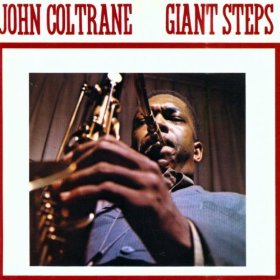That said, had Coltrane been a month earlier releasing Giant Steps, he would have joined Miles Davis, Ornette Coleman, Dave Brubeck and Charles Mingus in making 1959 the year that changed jazz. He cut the album in December 1959, but it was not released until January 1960.

This album marks a first for many reasons: first album that Coltrane recorded for Atlantic, first where all of the tracks are his compositions, and the first where his "sheets of sound" phrasing was prominent (it was not new, but came to the forefront with this album.) In a way, Coltrane is finally 'discovered' on this album because he is neither in the shadows of Miles, nor is he displaying his abilities on standards and compositions of others.
Everyone - every jazz aficionado and all musicians regardless of genre - should own this album. It broke new ground when it was released in January of 1960, and continues to this day to exert a major influence on musicians as well as listeners.I am about to cover what is known as Coltrane Changes, but that does not describe the music to the non-musician listener who has every right to enjoy this album on its own merits without some snob implying that its too sophisticated. For non-musicians or those who are not versed in theory the following two clips from the album will give a hint of what is on the album.
Naima
For musicians I highly recommend augmenting with album with Giant Steps: A Player's Guide To Coltrane's Harmony for ALL Instrumentalists.

I mentioned the term, Coltrane Changes at the beginning of this post. Here is an excellent explanation that will make a lot of sense to musicians, but can also be followed by folks who are not versed in theory or reading music. If you fall into the latter group check it out because I think you will get the gist of what is meant by the term.
Did you catch the part about Miles Davis' Tune Up and Coltrane's Countdown being essentially the same? That should come as no surprise since Coltrane was with Miles for nearly five years. He was on Davis' Kind of Blue album, and was also on the cream of the Prestige years. As a side note, I highly recommend Legendary Prestige Quintet Sessions

Now back to comparing Davis' Tune Up and Coltrane's Countdown:
Coltrane's Countdown
For drummers who are new to jazz and want to learn the basics of comping the way Jimmy Cobb did on this groundbreaking album I recommend checking out this post in my other blog called Snare Drum Addict.



No comments:
Post a Comment